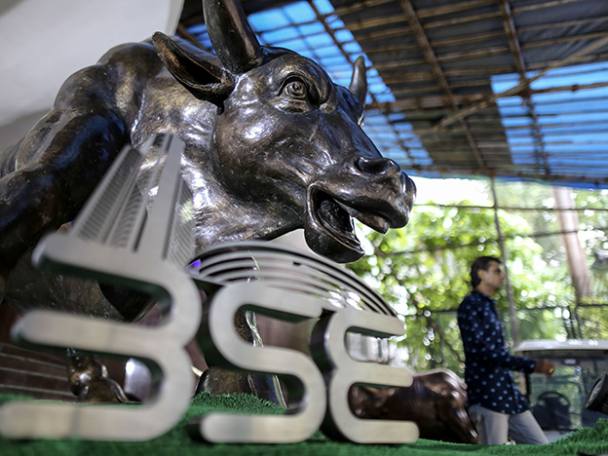- Indian stock market has been strong as economic prospects brighten
- Favourable demographics and an improving regulatory environment are supporting investment
- Politics are not straightforward and market is expensive relative to history
If the World Bank’s forecasts are correct, India will regain its status from China as the world’s fastest growing major economy next year, following years of disappointing growth and a pandemic that exposed India’s inadequate infrastructure, with tragic consequences. Investors are certainly bullish on India: its stock market has been the strongest of any major country's recently, with MSCI India index up 30 per cent over the year to 8 October. That compares with rises of 16 per cent for MSCI USA and 10 per cent for MSCI UK, and a 17 per cent fall for MSCI China over that period.
The question now is, are Indian equities too expensive or do its favourable demographics, huge population and improving regulatory environment make them one of the most promising structural growth stories available?
Some Asian and emerging markets funds' managers seem to take the latter view as they have been taking noticeably higher stakes in Indian equities. Mobius Investment Trust (MMIT), for example, had 27 per cent of its assets in India at the end of August – more than double its 12.5 per cent allocation to China. At the start of last year, the trust had a higher weighting to China than India.
Similarly, Baillie Gifford managed Pacific Horizon Investment Trust's (PHI) largest geographical allocation at the end of August was India in which it had 28 per cent of its assets. At the time of its annual report last year, to 31 July, the trust had over 40 per cent invested in China and less than 10 per cent in India.
Gaining business from China
A reason why the Indian market has surged in recent months is because multinational corporations have been looking to diversify their supply chains from China. This also follows prime minister Narendra Modi’s moves to improve the ease of doing business which led to some important regulatory reforms. In 2013, India was 132nd out of around 190 countries in the World Bank’s Ease of Doing Business rankings. Today it is 63rd, close behind Kenya and Mexico, and ahead of Greece.
David Cornell, managing director at Ocean Dial, the company which runs India Capital Growth Fund (IGC), says that another reason why companies are attracted to India is because the cost of labour is now one-third of that of China. “There is a huge competitive advantage at a time when India is also becoming easier to do business in from a regulatory perspective,” he says. He adds that it is a great place to build an operating plant because you can both export cheaply and sell to an enormous domestic market.
Several companies in niche sectors, including chemicals, electrical equipment manufacturing and pharmaceuticals have seen India win market share. These include India Capital Growth Fund holding Dixon Technologies (IND:DIXON), a manufacturer of smartphones and other electrical equipment for major brands, including Xiaomi (HK:1810), Samsung Electronics (KOR:005930), Nokia (FIN:NOK1V) and Motorola (US:MSI). Dixon's share price has almost doubled over the year to 8 October with several new contracts boosting sales, particularly in the mobile field.
Reforms and rising consumption
When Modi was elected Prime Minister in 2014 there was a lot of excitement about his economic reforms, but many were subsequently disappointed by the benefits they delivered. Modi put some short-term strains on the corporate sector by setting up a stricter regulatory system which should benefit the private sector and encourage more foreign investment in the longer term. The reforms included a much derided demonetisation in 2017 when Modi suddenly banned most of India’s cash to reduce corruption and tax evasion. Academics estimate that this move knocked at least 2 per cent off annual gross domestic product growth in the months that followed. Subsequent reforms such as the Insolvency and Bankruptcy Act and Goods and Services Tax – effectively a nationwide value added tax (VAT) – were also disruptive to implement but should prove positive in the long term.
Since 2019, Modi has been pursuing more of a growth agenda as he needs to manage India’s fiscal deficit. This is providing quicker wins for the private sector and investors, with targeted measures such as a fall in corporation tax rates and the $27bn (£19.81bn) Production Linked Incentive scheme to boost products made in India.
“Initial results are encouraging with visible traction in exports, and many global players like Apple (US:AAPL) and Xiaomi are scaling up their India operations meaningfully,” says Ramesh Mantri, adviser to Ashoka India Equity Investment Trust (AIE).
Rising incomes and consumption, meanwhile, are a key argument in favour of investing in India. Raj Nair, manager of JPMorgan Indian Investment Trust (JII), points out that there are over 480m Indians under the age of 20 — considerably more than the entire 370m population of North America. India is one of the few major investable countries where the working age population is set to grow strongly.
The increase of the middle classes and the rapid growth of mobile has driven growth in the country’ internet economy. Mantri says that India now has the third largest start-up system in the world with more than 65 Unicorns – private start-ups – with a value of over $1bn. “The new age tech space will continue to expand and throw up new opportunities in niche areas spurred by innovation, boosted by government initiatives like Digital India and Startup India,” Mantri adds.
While the Indian stock market doesn't include mega-cap tech companies such as those listed in China or the US, the success of food delivery app Zomato’s (IND:ZOMATO) initial public offering in July, India's first billion dollar tech start-up to go public, may have paved the way for further flotations in the consumer tech space.
And Pacific Horizon Investment Trust has made three investments in private Indian companies in the past financial year: Delhivery, a delivery ecommerce and logistics company; Dailyhunt, an online videomaker and Star Health, India’s largest healthcare provider.
Potential rewards with high risk
While India has attractive long-term fundamentals, India bulls have been disappointed many times before. Richard Champion, deputy chief investment officer at Canaccord Genuity Wealth Management, says that his firm removed India as a core theme in its equity allocation because of disappointing progress in its reform agenda. “The initial progress was good, but about two years ago there was evidence that the drive was being disrupted by internal politics,” he says. And he fears that the stagnation in the reform agenda may have led to more political pressure on the Reserve Bank of India which previously seemed “pretty independent.”
The pandemic has also exposed serious inadequacies within India’s infrastructure and the risk of a third wave of the pandemic, which could damage the economy and stock prices, cannot be ruled out. As with all emerging markets, geopolitical tensions also pose a risk and because India is one of the largest oil importers elevated oil prices may weigh on its economy. India, like China, also faces a power crunch amid coal shortages. However, Cornell does not think that this poses a significant threat yet and Indian companies are experienced in dealing with intermittent electricity supply.
Champion thinks that, overall, the Indian market looks frothy and many active managers agree that ratings are stretched in certain pockets of the market. However, India is home to over 7,000 listed companies, most of which are under-researched small- and mid-caps, so it is considered a stock picker's market. A study published by the Wall Street Journal found that over the 10-years from 2009 to 2018, an average active manager in India generated annualised excess return of 3 per cent – the highest globally. However, as the table shows, not all funds manage to outperform MSCI India index. And while India's long-term growth prospects look attractive, expect volatility along the way.
If you are tempted to invest in an India fund, first check first how much exposure you already have as broader Asian and global emerging markets funds are likely to hold investments in this market.
Stand out India funds
Four investment trusts and around 20 open ended funds specialise in India. The fund with the best five and 10 year track records is IC Top 50 Fund Goldman Sachs India Equity Portfolio (LU0858290173). The fund has around 100 holdings, the majority of which are large-cap growth companies. At the end of August, a fifth of the fund was invested in financials and 18 per cent in information technology, and its managers prioritise real cash flows over paper profits, only investing in companies where they see opportunity for a substantial gain.
Ashoka India Equity has made a net asset value (NAV) total return of 129 per cent over three years to 8 October, ahead of MSCI India index's 69 per cent. The trust had 42 per cent of its assets invested in large-cap companies at the end of August, with about 27 per cent in each of small- and mid-caps. But, at time of writing, it was trading at a premium to NAV of 2 per cent. The trust doesn’t have a fixed management fee but charges 30 per cent of out performance measured over three year discrete periods, which has proved expensive as it has performed well.
India Capital Growth Fund has performed very strongly recently, following a more difficult period. This investment trust is concentrated in small and mid cap companies which Cornell expects will have annual earnings growth of 30 per cent over the next two years. India Capital Growth Fund was trading at a discount to NAV of 9 per cent as of 8 October and has an ongoing charge of 1.82 per cent, according to the Association of Investment Companies.
Cost-conscious investors could instead consider iShares MSCI India UCITS ETF (IIND) which has an expense ratio of 0.65 per cent, though is still more expensive than developed markets equities passive funds.
Fund performance (cumulative total returns GBP)
| Fund/benchmark | 1yr (%) | 3yr (%) | 5yr (%) | 10yr (%) |
| Pacific Horizon Investment Trust share price | 40.58 | 193.68 | 291.29 | 555.52 |
| Mobius Investment Trust share price | 46.00 | 46.67 | ||
| Goldman Sachs India Equity Portfolio | 50.29 | 89.68 | 76.94 | 343.62 |
| Ashoka India Equity Investment Trust share price | 66.67 | 127.01 | ||
| India Capital Growth Fund share price | 79.08 | 58.61 | 65.30 | 202.40 |
| iShares MSCI India UCITS ETF | 38.09 | 65.97 | ||
| JPMorgan Indian Investment Trust share price | 38.50 | 44.27 | 24.49 | 129.68 |
| MSCI AC Asia ex Japan index | 4.64 | 33.20 | 46.30 | 159.32 |
| MSCI China index | -13.78 | 24.00 | 39.71 | 165.63 |
| MSCI India index | 39.24 | 69.45 | 69.71 | 182.59 |
| Source: FE analytics, 08.10.21 |









